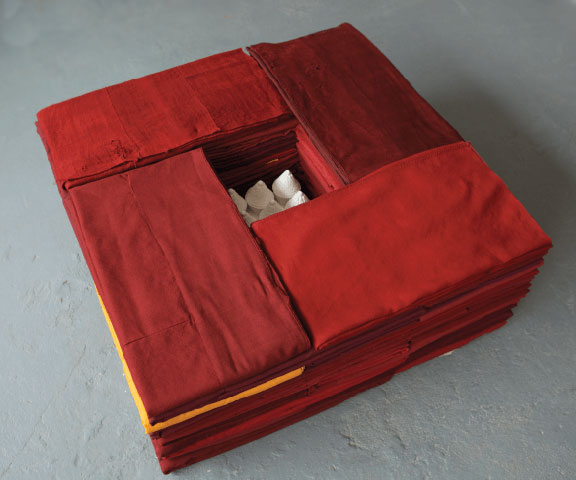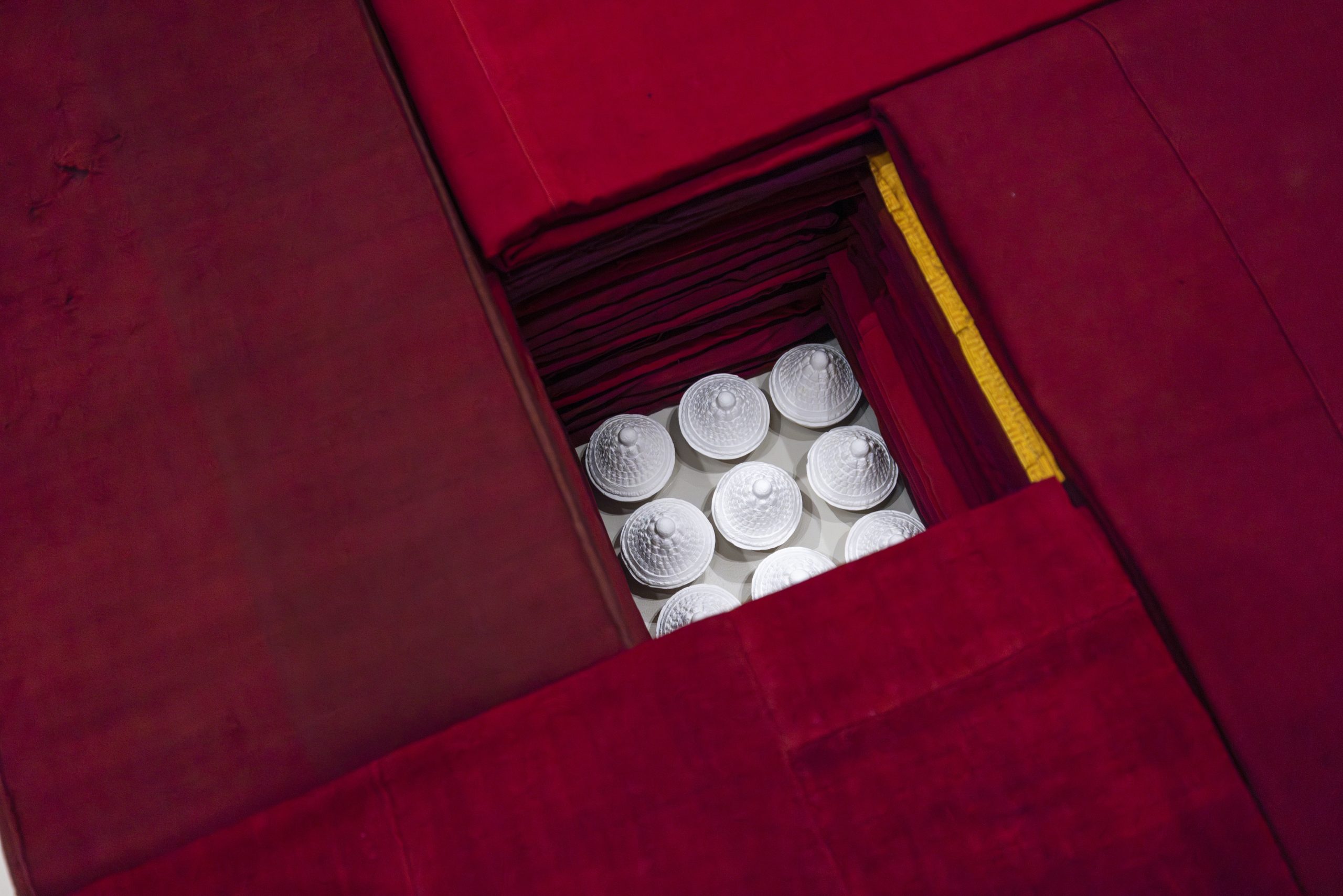STARTS
Oct 28, 2023
Ends
Nov 11, 2024
Free
Gallery 203
Sonam Dolma Brauen, My Father’s Death
Personal biographies, political histories, and Tibetan Buddhist beliefs and practices inform Sonam Dolma Brauen’s sculpture My Father’s Death (2010). Born in 1953 in Tibet, Sonam and her family fled their homeland when she was a child. Assembled with robes donated by Tibetan monks and tsa tsas, molded objects used as votive offerings, My Father’s Death commemorates Sonam’s own father, Tsering Dhondup, who died a few years after the family came to India as refugees.

The exhibition pairs Sonam’s work with Buddhist sculptures from Nepal and Tibet, offering visitors the opportunity to contemplate how concepts of consecration, relics, and commemoration are explored in Buddhist art and ritual practices across time.
Organized by The Nelson-Atkins Museum of Art. This exhibition is generously sponsored in Kansas City by Lilly Endowment, Inc., Evelyn Craft Belger and Richard Belger, and the Fondation Foyer.
